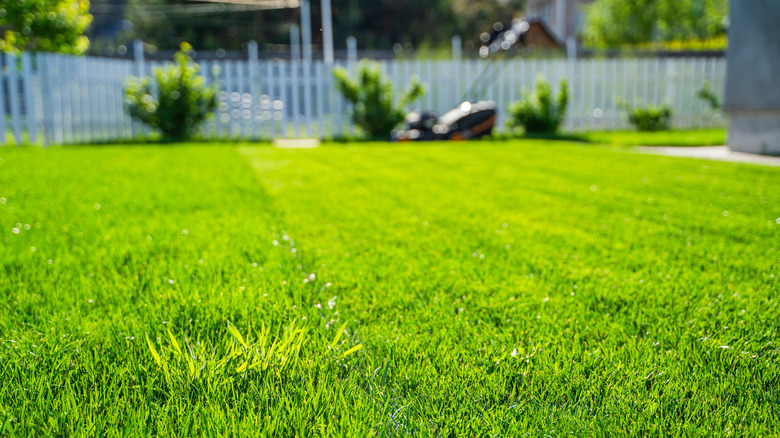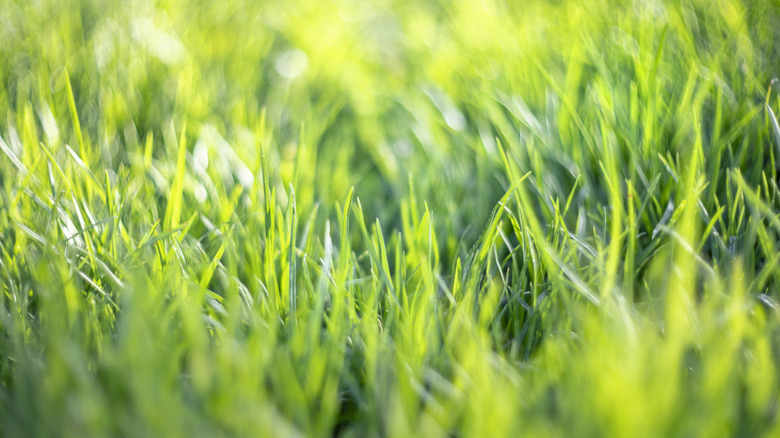The Epsom Salt Fertilizer Your Lawn Is Begging For (And The Best Time To Do It)
If your lawn's been looking a little dull and patchy lately, the problem may not be down to your mowing or watering schedule. A common culprit for dull lawns is actually magnesium deficiency. Magnesium is needed for photosynthesis and lawns low in magnesium often turn yellow between the veins (a symptom called chlorosis) or take on a reddish tint and grow more slowly. A loss of magnesium can happen naturally if your soil is sandy, or it can happen after periods of heavy rainfall when nutrients get washed away. But it turns out that epsom salt — the stuff you use in the bath to alleviate your sore muscles — may be just what your lawn needs to restore magnesium levels.
Using it couldn't be easier: dissolve a couple tablespoons in a gallon of water then spray the mixture over the lawn, or simply sprinkle the epsom salt straight over damp grass before watering it in. Once you've tried it, you should know there are plenty of other smart ways to use epsom salt around the house. With this trick, you won't wake up to a miracle overnight, but with a few weeks of consistency, you'll notice greener, thicker blades and fewer bald spots. Just don't go overboard, as too much salt can mess with the soil balance.
Why fall is the sweet spot for application
While you can use epsom salt any time, using it in the fall has a particular advantage. The cooler weather slows the grass's top growth, but underground the roots are still working away. It's a great time to feed the roots because they can store up nutrients for winter to keep them supported during the cold season. By the time spring comes around, your grass will be looking stronger than ever. You should aim to treat your lawn in the fall, once summer's heat has backed off but before the first frost has arrived, as the soil will still be warm enough for adequate absorption.
And if you've aerated recently, you're in even better luck. Those little holes will get the nutrients down to the roots quicker, letting the epsom salt get right where it's most needed. Keep in mind the downsides to lawn aeration — it's not something to overdo, and doing it when your lawn doesn't need it can actually cause more stress than good. But by applying epsom salt to this practice at the end of the growing season, you'll allow the grass to do the work during the cooler months. By spring, you'll be thanking us for it.

